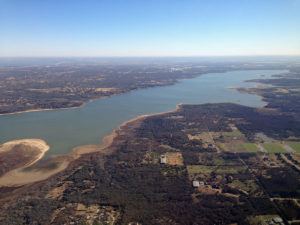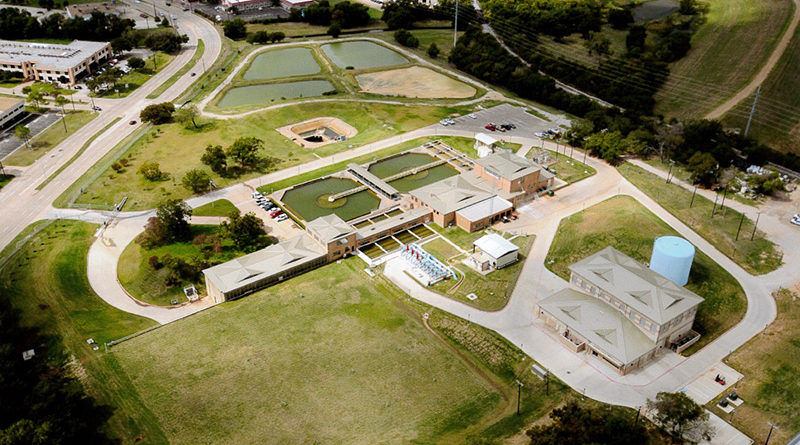Water Sales Fall Short of Projections
The saying “Hope for the best and prepare for the worst” is an apt description of how utility officials budget to keep water flowing.
(ABOVE: At its Regal Road plant, the Dallas County Park Cities Municipal Utility District, formed in 1938, treats the water it sells wholesale to Highland Park and University Park. Since 1954, water for the Park Cities has come from Grapevine Lake in Tarrant and Denton Counties. Courtesy Dallas County Park Cities Municipal Utility District)
Ironically, this task can get more complicated during times of abundant rainfall, when lakes are full and ready to release water to keep green yards from turning brown.
People rely less on municipal water while wet weather is doing most of the work, and that means fewer water sales and, presumably, less money available for ongoing infrastructure improvements like replacing aged distribution pipes.
That’s the situation officials in the Park Cities face coming off a super wet 2018.
Since the beginning of the fiscal year in October through March, water revenues for Highland Park were short almost 25 percent from projections and down more than 20 percent from the same months a year ago. With a related reduction in sewer revenues, that has made the town’s utility revenues $783,818 less than projected.
Steven J. Alexander, the town’s director of administrative services and CFO, said the shortfall isn’t an immediate concern because the utility fund has adequate reserves and summer is coming.
However, if the trend doesn’t change, the town could consider stretching out its maintenance schedule to hold off the need for a rate increase.
“Let’s hold a good thought, so we don’t have to charge more for using less.” -Mayor Margo Goodwin

“We had not planned another rate increase until the year after next,” he said.
“Let’s hold a good thought, so we don’t have to charge more for using less,” Mayor Margo Goodwin said.
However, the reduced consumption isn’t all bad news.
“I’m very pleased to see our volume consumption is down,” Mayor Pro Tem John McKnight said.
He noted how the town encouraged conservation with the installation last year of “smart meters” that help residents better track usage and detect potential leaks.
University Park expects to finish installing smart meters soon.
Like the town, the city has seen utility revenue decline. Since the beginning of the fiscal year through March, water sales are 19 percent below projections, an $821,579 shortfall.
But planning and analysis hedges against budget shortfalls, said Jacob Speer, public works director for University Park.
“We’re looking at observations that take in both drought and wet years so that, fortunately, we’re not on razor-thin margins in the utility funds,” he said.
Abundance, Speer noted, shares one thing with drought: Both are cyclical.
Area reservoirs, including the Park Cities’ source, Grapevine Lake, with 161,250 acre-feet available for drinking water — benefited from 2018’s heavy rainfall.
National Weather Service data shows the Dallas-Fort Worth area got nearly 56 inches of rain last year, which almost made it the wettest on record. That top prize goes to the 62.61 inches recorded in 2015.
Nevertheless, utility officials with their ongoing forecasts, budgeting, and saving, manage to keep infrastructure improvements on track.
“There are good amounts of reserves in those accounts,” Speer said of the city’s water funds. “But we don’t just rush out and spend. It is, quite literally, a rainy day fund.”
William Taylor contributed to this story.









